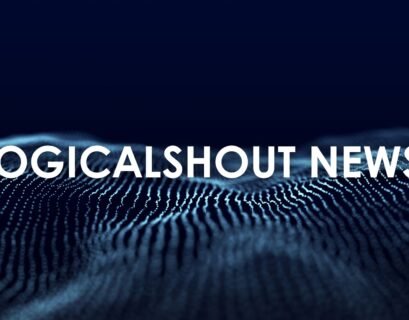The modern news cycle feels like standing under a firehose fitted with a fog machine—millions of droplets, none of them shaped. Market updates battle celebrity scandals for the same fifteen-second glance, and by the end of the day, even seasoned analysts admit they can’t recall what truly mattered. Enter general news LogicalShout, a platform built on the premise that information only counts when it sharpens choices—where to invest, which policy to lobby, and how to steer a product roadmap. This article unpacks LogicalShout’s data-to-decision pipeline, showing how its algorithms and editors tame chaos into clarity without sacrificing breadth, depth, or the serendipity that sparks breakthrough ideas.
Table of Contents
1. The Quantified Newsquake: Why Raw Headlines Aren’t Enough
Conventional aggregators treat every headline as a unit of equal weight, stacking them chronologically until your phone buzzes like a frantic Morse code operator. LogicalShout begins further upstream by defining impact metrics that most feeds never consider: projected market-cap swing, regulatory half-life, social sentiment velocity, and cross-sector spillover potential. A labor-strike bulletin, for example, might rank low on pure click volume but soar in impact if historical data show ripple effects on supply chains or inflation. This early triage means the general news LogicalShout digest you open at 7 a.m. is already pre-sorted to match the way executives and policy analysts think—starting with “What could move the needle today?” instead of “What just happened?”
2. Inside the Signal Engine: Harvest, Cluster, Contextualize, Forecast
LogicalShout’s proprietary engine runs four sequential modules that convert raw news into decision-grade insight:
- Harvest ingests more than 60,000 daily sources—wire services, think tank PDFs, regulatory filings, Telegram channels, and open-data portals—assigning each a composable credibility score updated weekly.
- Cluster – Natural-language models detect story overlap, merging dozens of near-duplicate flashes about the same central bank decision into one canonical event object.
- Contextualize – Another model attaches historical baselines (“How did similar rate hikes move the bond market in 2019?”), stakeholder maps, and precedent cases, enriching each event with a memo-ready knowledge card.
- Forecast: A gradient-boost ensemble weighs the card’s variables—timing, geopolitical tension, and sentiment trajectory—to estimate two probabilities: the likelihood of policy follow-through and the magnitude of downstream effects.
When an item surfaces in the general news LogicalShout app, you aren’t staring at a headline; you’re reviewing an evidence-stamped hypothesis about the near future.
3. Personalization, Not Isolation: The Anti-Bubble Architecture
Any platform that filters news risks trapping users in echo chambers, so LogicalShout bakes in what its designers call “contrarian interrupts.” The algorithm guarantees that at least ten percent of your daily digest comes from outside your historical preference graph—opposing political viewpoints, unfamiliar regions, or nascent industries adjacent to your own. Rather than sabotage relevancy, these interrupts expand the mental surface area, making it likelier you’ll spot second-order threats or opportunities. A fintech founder, for instance, might receive a brief on rare-earth mineral shortages; a month later, that story becomes crucial when chip costs squeeze cloud-server prices. Users can nudge the diversity slider toward “deep niche” or “broad horizon,” but they can never mute it entirely, ensuring general news LogicalShout remains a radar, not a mirror.

4. Dashboards and “Decision Hooks”: Turning Alerts into Action
Notifications alone rarely drive behavior; actionable framing does. LogicalShout’s interface features “decision hooks” attached to each news card—buttoned shortcuts that translate insight into the next steps without a hunting expedition. Typical hooks include:
- Data Pull – Auto-generate a CSV of the underlying economic indicators cited.
- Scenario Builder: Fork the story’s forecast variables and run “what-if” Monte Carlo simulations, exporting the results to Excel or Python notebooks.
- Stakeholder Ping: With one click, draft an email or Slack message tagging relevant team members with a summary and recommended options.
By embedding these hooks, general news LogicalShout shrinks the latency from knowing to doing. Internal analytics show corporate subscribers who deploy hooks execute follow-up actions 42 percent faster than peers who rely on plain alerts, a gap that compounds into a real competitive advantage.
5. Human Editors in an Algorithmic Age: The Trust Layer
Even the sharpest model can hallucinate or miss subtle cultural cues. LogicalShout, therefore, maintains a global roster of subject-matter editors—ex-diplomats, veteran correspondents, and data scientists—who conduct hourly spot checks and deep audits whenever the engine flags conflicting facts. During the early 2025 Gaza-Ceasefire negotiations, for example, rumor velocity outpaced official statements; editors inserted caution banners and slowed push notifications until verification thresholds cleared, preventing misinformation whiplash. This “human over algorithm” override builds a credibility moat: users trust that general news LogicalShout would rather be five minutes late than one fact wrong.
6. Workflow Integrations: Meeting Users Where Decisions Are Made
Reading a digest is only the first mile; most decisions happen inside other tools—trading terminals, project-management suites, CRMs. LogicalShout’s REST and GraphQL APIs let companies pipe the ranked-event stream into custom dashboards or home-grown risk engines. Popular plug-ins include a JIRA card generator that converts policy alerts into engineering backlog tickets and a Tableau connector that overlays sentiment scores on sales heat maps. For frontline managers, a lightweight mobile widget surfaces industry-specific flashcards between calendar appointments. In every case, the ethos remains: general news LogicalShout doesn’t ask you to live in one more app; it injects situational awareness directly into the software you open a dozen times daily.
7. Ethical Guardrails: Privacy, Bias, and the Right to Disconnect
Information abundance can morph into surveillance creep, so LogicalShout enforces privacy by design. All personalization models default to on-device computation; opting into cloud sync triggers end-to-end encryption and deletes raw logs after general news logicalshout seven days. Bias monitoring runs in parallel: quarterly audits sample topic distribution across demographics to ensure no group issues fade from coverage due to skewed training data. Finally, the platform offers a “quiet mode” that caps after-hours alerts except for critical security or health risks, acknowledging that the smartest decision sometimes is to not open another notification.
Conclusion: From Data Points to Leverage Points
Raw headlines are plentiful in the post-truth, information-surplus era, but strategic clarity is scarce. LogicalShout bridges that gap by ranking events not by general news logicalshout noise but by potential leverage, wrapping each item in the context, forecasts, and hooks that busy professionals need to move from awareness to execution. For investors, that might mean reallocating capital before the market wakes up; for policymakers, adjusting talking points ahead of a radio interview; for product teams, shipping a feature that anticipates regulatory winds instead of merely reacting to them. Whatever your domain, general news LogicalShout reframes news from a passive stream into an active instrument—turning data into decisions that matter.

FAQs
1. How does LogicalShout decide which sources are credible enough to influence its rankings?
Every publisher enters a dynamic general news logicalshout scoring system that weighs past factual accuracy, retraction rates, expert-panel bias evaluations, and funding transparency. Scores adjust weekly, so a source that improves editorial standards can climb while repeat offenders drop or face temporary exclusion.
2. Can I integrate LogicalShout insights into my proprietary analytics stack without exposing sensitive company data?
Yes. The platform offers general news logicalshout containerized micro-services that are deployable behind your firewall. All personalization occurs locally, and outbound calls can be restricted to anonymized metrics, ensuring corporate IP never leaves your environment.
3. Does the “contrarian interrupt” feature slow my ability to see niche news first?
No. Niche alerts remain top-ranked for general news logicalshout relevance; contrarian items occupy a protected but limited slot in the digest. You still receive real-time specialty updates, while occasional out-of-domain briefs preserve situational awareness.
4. How does LogicalShout price its service for individual versus enterprise users?
Individuals can choose between a free tier (limited to ten ranked events daily) and a premium plan with unlimited cards, analytics general news logicalshout exports, and device sync. Enterprise pricing is seat-based and bundles API access, SLA-backed uptime, and dedicated editor consults.
5. What if a breaking story later proves false—does LogicalShout issue corrections?
Absolutely. The platform maintains revision histories; general news logicalshout any factual correction triggers an automated push with a red-lined comparison to prior statements, plus an impact reassessment if the initial forecast relied on erroneous data.
















